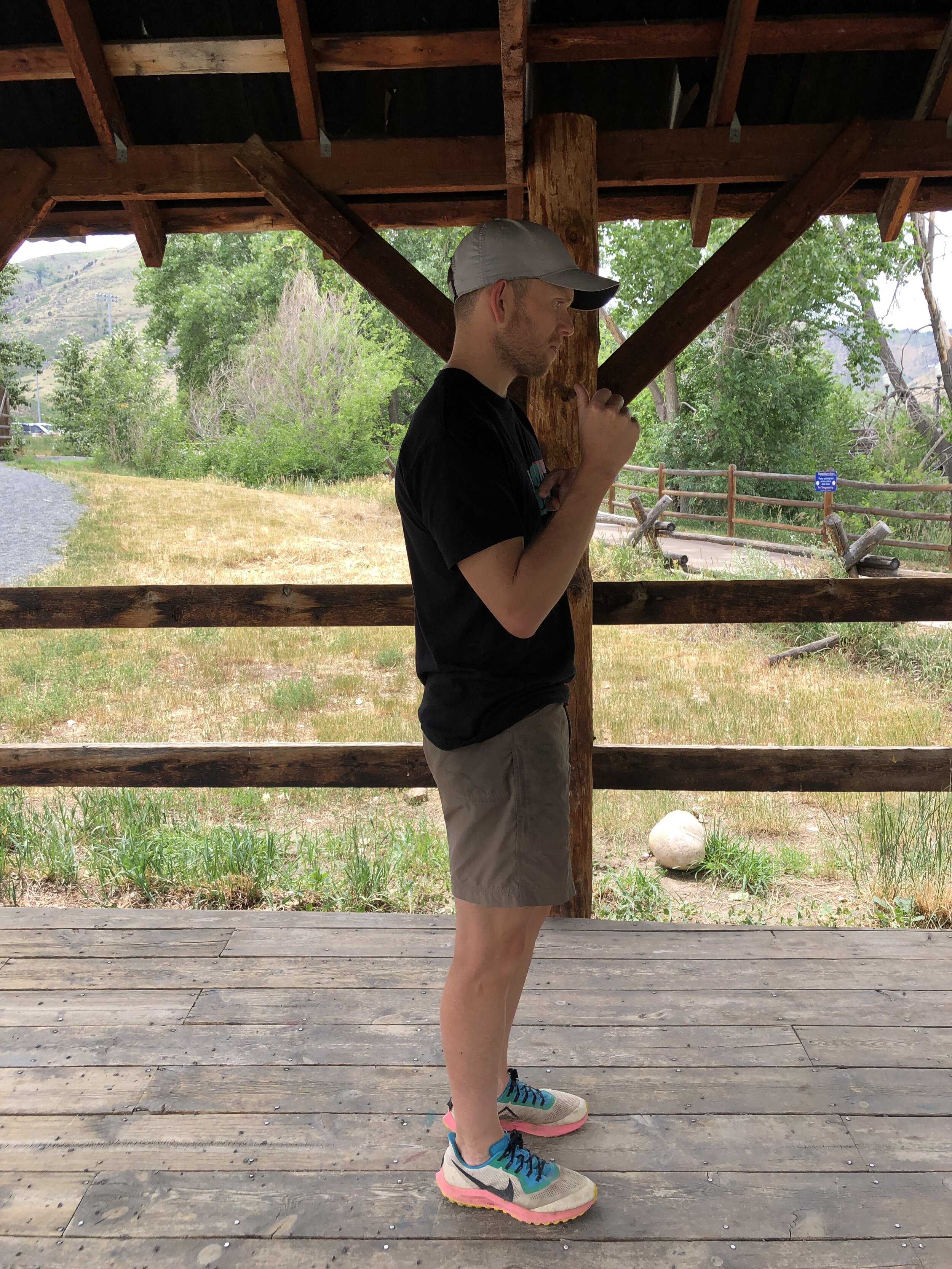5 Things I Wish Runners Knew About Running Form
Hey! I’m Coach Andrew Simmons Head Running Coach at Lifelong Endurance. I’ve spent the last 6 years honing my skills and developing a method to help athletes unlock free speed by working on their running form.
Taking the time to focus on your form allows you to simultaneously build fitness, run faster, and stay injury free. On average 67% of runners will see at least one running injury, 56% will see more than one injury in the next 2 years. What was the biggest factor that if improved could lower a runners risk? Improving their running form and mechanics.
We’ve built a free guide to help remove frustration and help you break bad habits.
End of Arm Swing
When you’re really putting down power, arms should clear your hips and fore arms should be 90 degrees from the shoulder. Unload the arms and drive them open and back
Start of Arm Swing
Acute Forearm/ Bicep Angle at the start of the arm swing (load the arms). Hand should be thumbs up , straight wrist coming just under the chin roughly even with Shoulder.
5 - You have to use your arms!
Your arms should swing! An up/down limp wristed shuffle doesn’t count unless you’re going for best T-rex impression. The angle between your forearm and bicep should close at the top and open as you bring your elbow back. The faster you go - the larger the arm swing. Use your arms! Especially up hill! Not using your arms robs you of at least 30% of your power! Next time you’re out for a run try running uphill with no arm swing and then on your next hill throw in a bigger swing and see which one got you uphill faster. Bigger Arm Swing = Bigger Power - the secret to a great kick is in your arms!
Most people struggle to use their arms on aerobic arms, you still need to move them forward! Open and close your arms, with a tight wrist while keeping thumbs up; this subtle tweak can help you drop :!5/ mile for free on your next aerobic run. Remember - the faster you go the bigger the swing - if you’re not trying to go fast keep it light and efficient.
4- Weak Muscles Prevent Perfect Form
This shouldn’t be a shock but most running injuries are a combination of weakness compensation or poor mechanics preventing you from moving your body without pain. Running like many sports has repetitive motion especially when you consider each foot strike is equivalent to 7x your body weight. You have to have a great foundation! Weak Hips can result in IT Band Syndrome and poor running mechanics can translate to shin splits and a frustrating case of Runner’s Knee.
3 - Working on your form is unlocking free speed
It’s no secret that if you driving around with your parking brake on in your car you’re going to take longer to get up to speed, spend more gas staying at speed, and go through brake pads in no time. The same goes for your running - if you’re running with poor form you’re running with your parking brake on. We’ve built a comprehensive guide that focuses on helping you unlock free speed and take the brakes off! Check out our free guide below.
Take the guess work out of your running form.
2 - It’s going to take focused work to improve your form
One session won’t do it. You will have to make form work a priority, it won’t just be doing a couple drills and calling it a day. You’ll have to be diligent about hitting your cadence, being conscious of how your arms and legs are moving. Simply put, you’re changing bad habits and just because you decide you’re going to fix it doesn’t mean it happens overnight. Expect that your form will evolve over 6-10 weeks of work. You’ll find that using a metronome on your easy runs, getting filmed by a partner, and making drills part of your warm up and cool down will help you get the movements right.
It might also mean that you have to integrate strength training to build up weak muscles. You need to build strength in your core, hips, and legs to help your great form go the distance. Expect to be sore for the first few days of this work - you are working muscles that have long since been ignored.
1- Heel Striking is a Normal Part of your Gait Cycle
Jump in and get your feet wet and then go for a run. I can promise you’ll see a full foot print! Anytime we run or walk we move from heel to toe. Heel striking has been demonized in books and numerous online publications. You shouldn’t worry so much about HOW your foot lands but WHERE it lands in relation to your center of mass. When you’re reaching out in front of you; you are momentarily braking and sending ground reaction forces (Newtons 3rd Law) into a partially locked joint can cause some serious pain. You can land heel first underneath your center of mass and allow your joints and muscles respond as they are designed.




